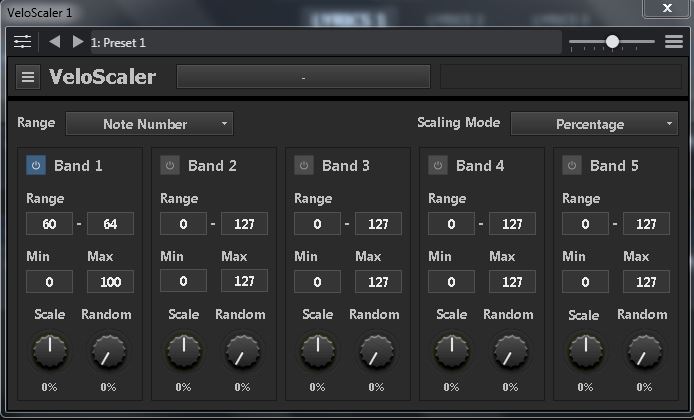Thought I would very briefly touch on this problem I had a couple of years ago. One of my rehearsal M-Audio key controllers was starting to blow out the rubber contacts. It started with one key, then two…I many times have opened up the keyboard, and robbed from the higher or lower keys for replacements, as it is mostly impossible to find the rubber strips. I asked if there was a way to correct this thru midi, but never found a solution…until now. CodeFN42 VeloScaler works great…and it’s free (donation ware). VeloScaler
I was able to lower the velocities of my problem keys from constant 127 to 100 and now those full velocity keys are somewhat tamed now, at least for rehearsal.
Corky
